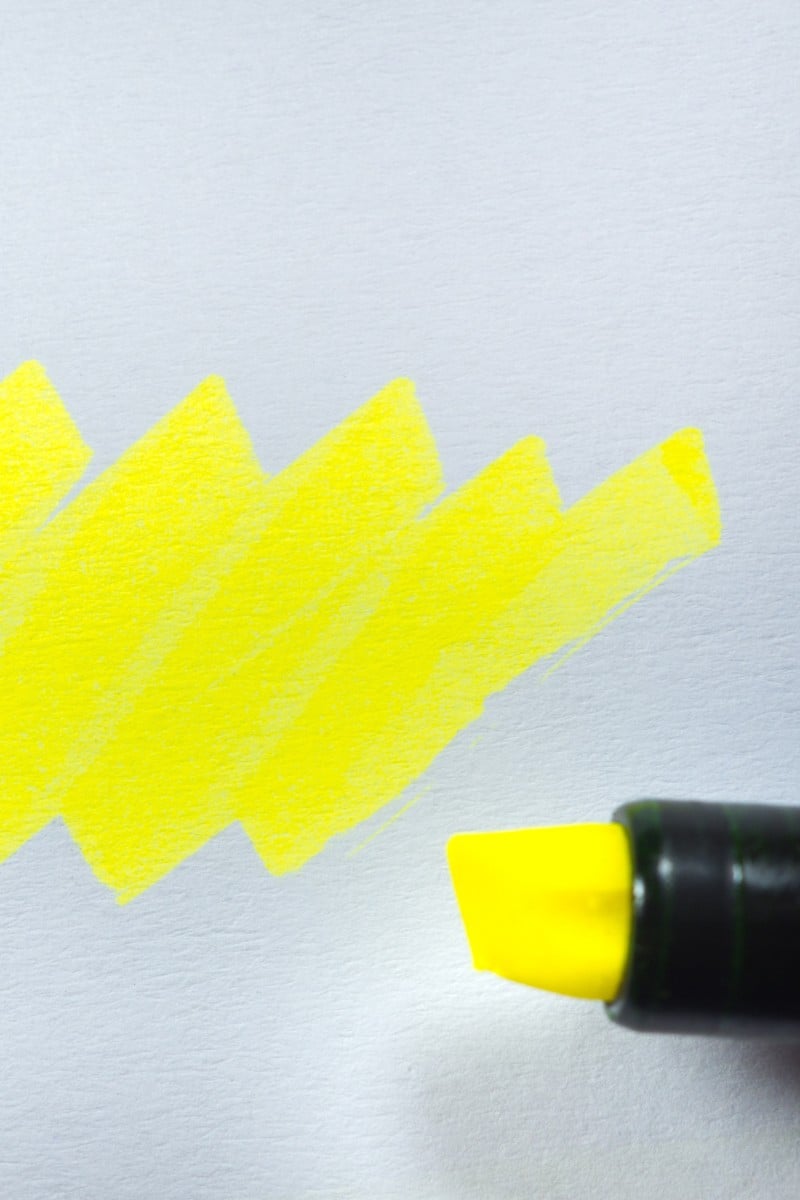
- Highlighter pens, fluorescent bulbs and road signs are just a few examples of a scientific phenomenon that makes colours appear brighter than usual – what’s the science behind this?
- Young Post is partnering with Hong Kong Science Museum and Hong Kong Space Museum to answer your questions about STEM and the fantastic world around us
 There’s a lot that goes behind the humble highlighter – chemicals in the ink absorb UV light and spit it back out as visible yellow light. Photo: Shutterstock
There’s a lot that goes behind the humble highlighter – chemicals in the ink absorb UV light and spit it back out as visible yellow light. Photo: ShutterstockNo stationery case is complete without an array of pens, correction fluid and highlighters. From marking up notes to adding a pop of colour to doodles, the eye-catching ink is a sure way to make things stand out. But have you ever wondered why highlighters are so bright?
How fluorescence works
It all boils down to a phenomenon called fluorescence, which is the brightness we see emitted by certain objects when they absorb light.
Light, or electromagnetic radiation, can be categorised into seven different wavelengths, but we cannot see most of them, except for visible light. Within the colours of visible light, red is the longest wavelength and violet the shortest. The colour we see is a result of the wavelengths reflected or directed to our eyes.
To understand how this works in highlighter pens, we can compare them to ordinary ballpoint pens. When light hits the ink of a blue pen, the ink reflects blue light and absorbs other colours, which is why the ink appears blue. Highlighter pens contain chemicals that absorb visible light as well as ultraviolet (UV) light, which humans cannot see. The UV light “excites” the electrons in the ink’s molecules and causes them to enter a higher energy state. Then, the electrons release the energy in the form of visible light, which makes the ink look extra bright.
What is luminescence?
Fluorescence is a type of luminescence, which describes the emission of light produced by methods other than heat. Another is phosphorescence.
The main difference between the two is the duration of light emission after the electron has been “excited”. In fluorescence, the glow ends once the “excitement” ends, but in phosphorescence, the absorbed energy can be stored so that it continues emitting light for longer. Depending on the material, the phosphorescence afterglow can last anywhere from a few seconds to hours
How does time in space affect the human body?
What are other things that glow? Where can we find them?
There are four main types of luminescence: fluorescence, phosphorescence, bioluminescence (production and emission of light by living organisms) and chemiluminescence (emission of light as the result of a chemical reaction). The flow chart below shows how they are different and gives examples of each type.
Content provided by
Young Post is pleased to partner with Hong Kong Science Museum and Hong Kong Space Museum on our STEM Lab series. Our aim is to encourage you in your pursuit of science. Every month, the two museums will answer your burning questions about the fantastic world around us, the cosmos, and beyond.
